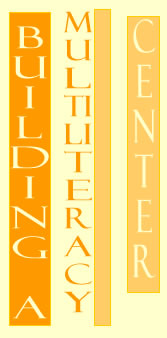

Course
Assignments
KHM: How did you work out the organization for the class and the
assignments?
DS: Because it was a writing course, we wanted to retain a lot of traditional writing in addition to the composing in new media that the students were being asked to do and the visual communication and design that the students were being asked to learn. So we had them do things like write analyses of websites that examined all components of existing websites -- the design, the layout, the visual components, the navigation schemes. We had them write proposals. We had them do written content for the HERO and COURSE websites themselves. So there was a lot of traditional writing built into the course.
KHM: Did you assign readings or supplementary material about visual rhetoric and communication?
DS: I think George Cooper, who taught the course, and myself, as the person who provided support to him, were very concerned that we gave students enough resources to think in sophisticated ways about design, visual communication and technical matters. And so, we asked students to read Visual Communication: a Writer's Guide by Susan Hilligoss, which attempts to make design principles accessible to writers, to non-specialists. We also had them purchase Robin Williams and John Tollett's' Non-Designer's Web Book, although we didn't talk about that text extensively in class. We just had them have that as a resource.
KHM: Did they talk about visual communication together as a class?
DS:
Yes. They talked about visual communication from what they read in the
book and they also critiqued websites. We looked at a lot of websites.
We dissected the way websites are put together. We talked about the rhetorical
aspects of different websites. We had them identify websites that they
liked and talk about what they liked about them. We looked at other non-profit
websites, other professional sites. In one case, we even had a representative
from a third non-profit group, who had been extensively involved in the
development of a website, talk about the process of developing a website
for this non-profit group.
Top | Next